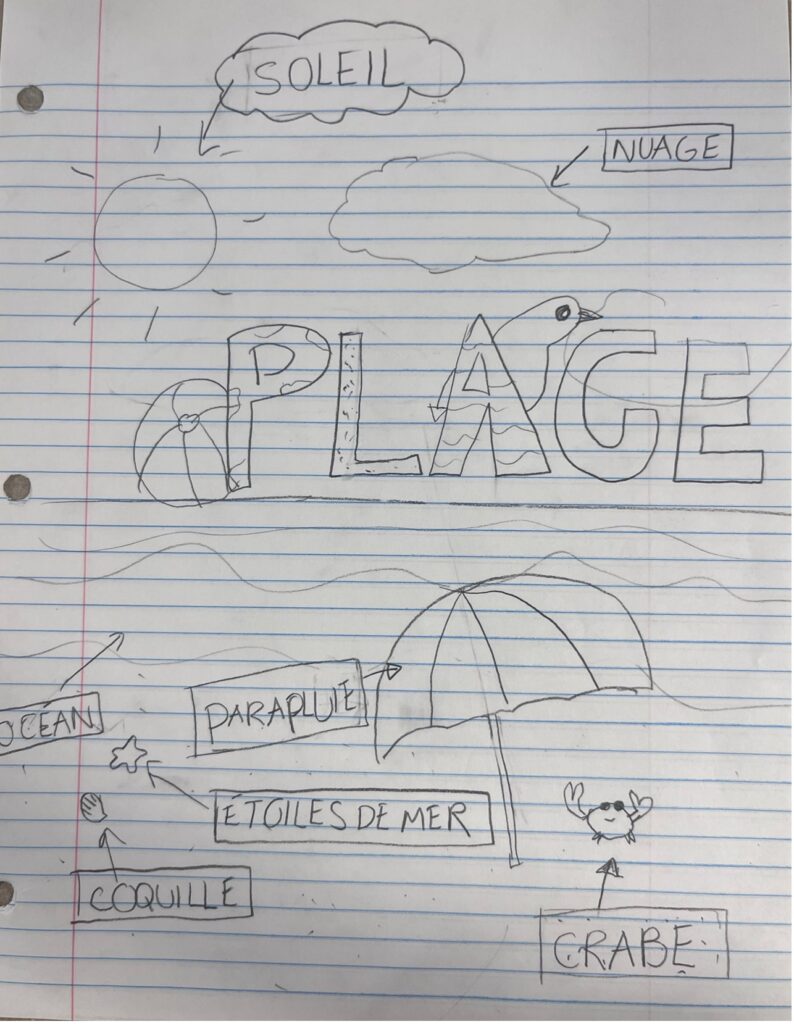Sketchnoting the Beach (Plage) in Class

Below is a summary of what I’ve learned
SAMR Model
The SAMR model, developed by Dr. Ruben Puentedura, is a framework that helps educators evaluate how technology can transform teaching and learning. SAMR stands for Substitution, Augmentation, Modification, and Redefinition, representing the different levels of integrating technology into the classroom. You can watch this video on SAMR for further explanation.
The SAMR Model: Technology Integration from Enhancement to Transformation

Challenges of SAMR
While SAMR provides a roadmap for technology integration, it can be time-consuming for teachers to implement effectively. One of the key challenges is assessing the individual needs of students within limited time constraints. How do educators ensure technology meets each student’s needs in a timely manner?
TPACK Model
TPACK model, first introduced by Punya Mishra and Matthew J. Koehler in 2006 by research found HERE. The TPACK model helps educators select the most appropriate technology or tools to meet specific learning objectives. This model emphasizes the combination of technological, pedagogical, and content knowledge, helping teachers choose tools that enhance their teaching in meaningful ways. It’s important to evaluate the strengths and weaknesses of each tool since not all educational technologies are suitable for every classroom or age group.
Could Sketchnoting Benefit Grade 3 Learners?
A 2018 study from the University of Waterloo, found that drawing is superior to writing for memory retention. This study showed that older adults could enhance their memory by incorporating drawing into their learning process. I believe this approach could greatly benefit my future Grade 3 classroom, as most children enjoy drawing and being creative. The study can be found HERE.
For example, when teaching a topic like fractions, students could use sketchnoting to visually organize their ideas, linking concepts across the page to aid in retention. By engaging in this creative process, students may find it easier to remember new concepts while enjoying the learning process.